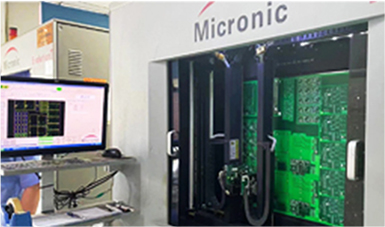-
CN
-
Service Hotline
+8618129931046 Mr. Liao


Time:2025-06-23 Views:1

The vias cover oil process in double-sided printed circuit boards (PCBs) is a crucial manufacturing technique that significantly impacts the performance, reliability, and lifespan of the PCB. In double-sided PCBs, vias are holes that connect the components and traces on the top and bottom layers, facilitating electrical connections between different parts of the circuit.
The cover oil process begins with the proper preparation of the PCB. After the drilling of vias and the completion of the circuit pattern, the board is cleaned thoroughly to remove any debris, dust, or contaminants that could affect the adhesion of the cover oil. The next step involves applying a layer of solder mask, a type of protective covering, over the entire PCB surface, including the vias. The solder mask is usually a liquid or dry film material that can be applied through methods such as screen printing, spraying, or laminating.
One of the key aspects of this process is to ensure that the vias are properly covered while maintaining their electrical functionality. If the vias are not adequately covered with the solder mask, it can lead to short circuits, as exposed metal in the vias may come into contact with other components or traces. Additionally, uncovered vias are more susceptible to oxidation, corrosion, and physical damage, which can degrade the performance of the PCB over time. To achieve a good via cover, manufacturers may use techniques like via plugging, where the vias are filled with a suitable material, such as solder mask ink or conductive paste, before the overall solder mask application.
This process offers several benefits. Firstly, it improves the electrical insulation of the PCB, reducing the risk of electrical failures. Secondly, it enhances the mechanical protection of the vias and the overall board, making it more resistant to environmental factors like moisture and dust. Moreover, a well-executed vias cover oil process also contributes to the aesthetic appeal of the PCB, which can be important in some applications where the appearance of the product matters.